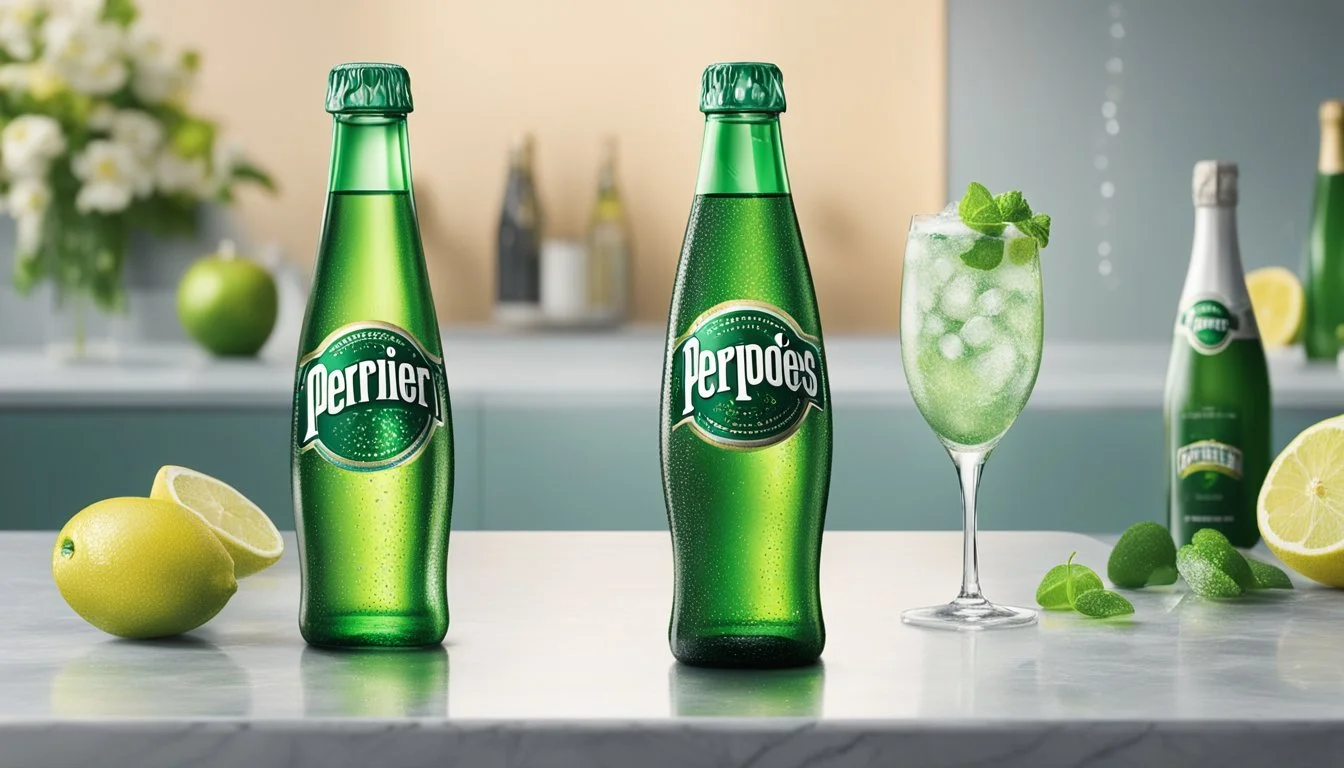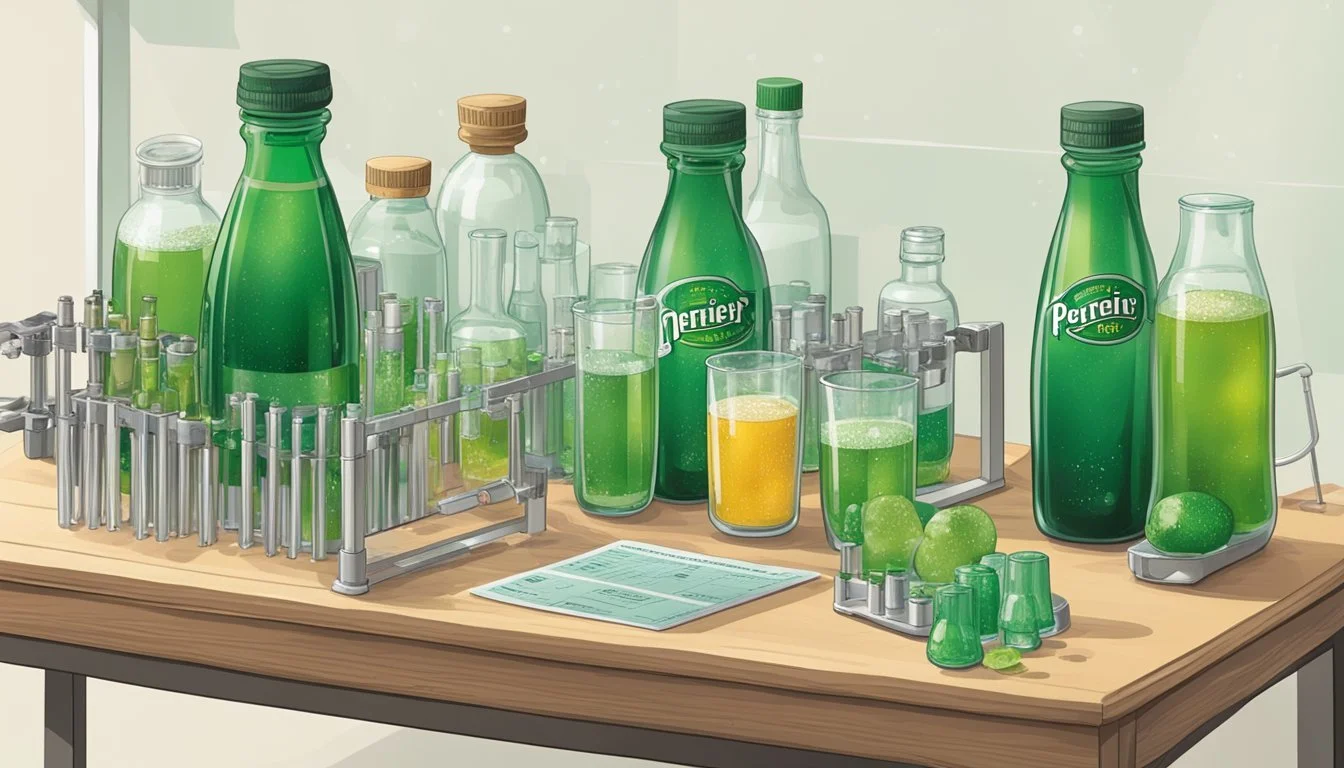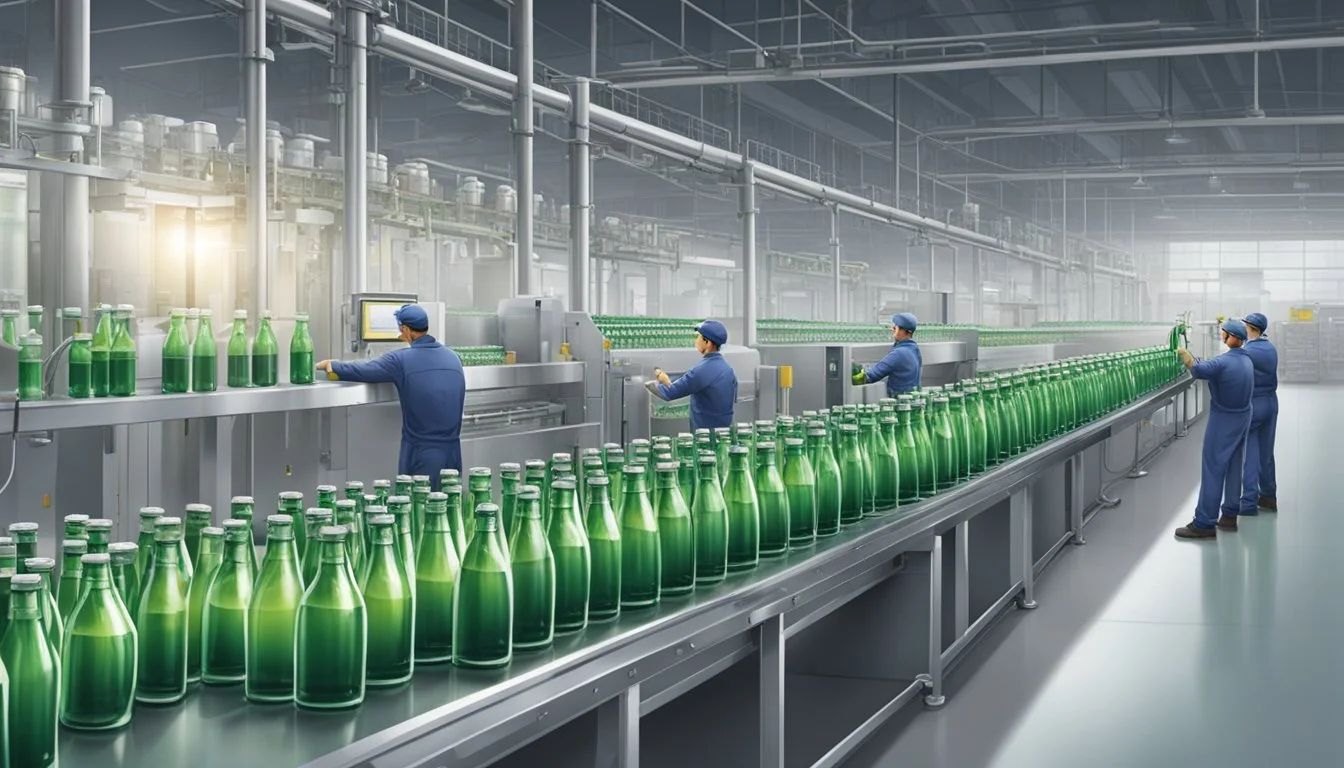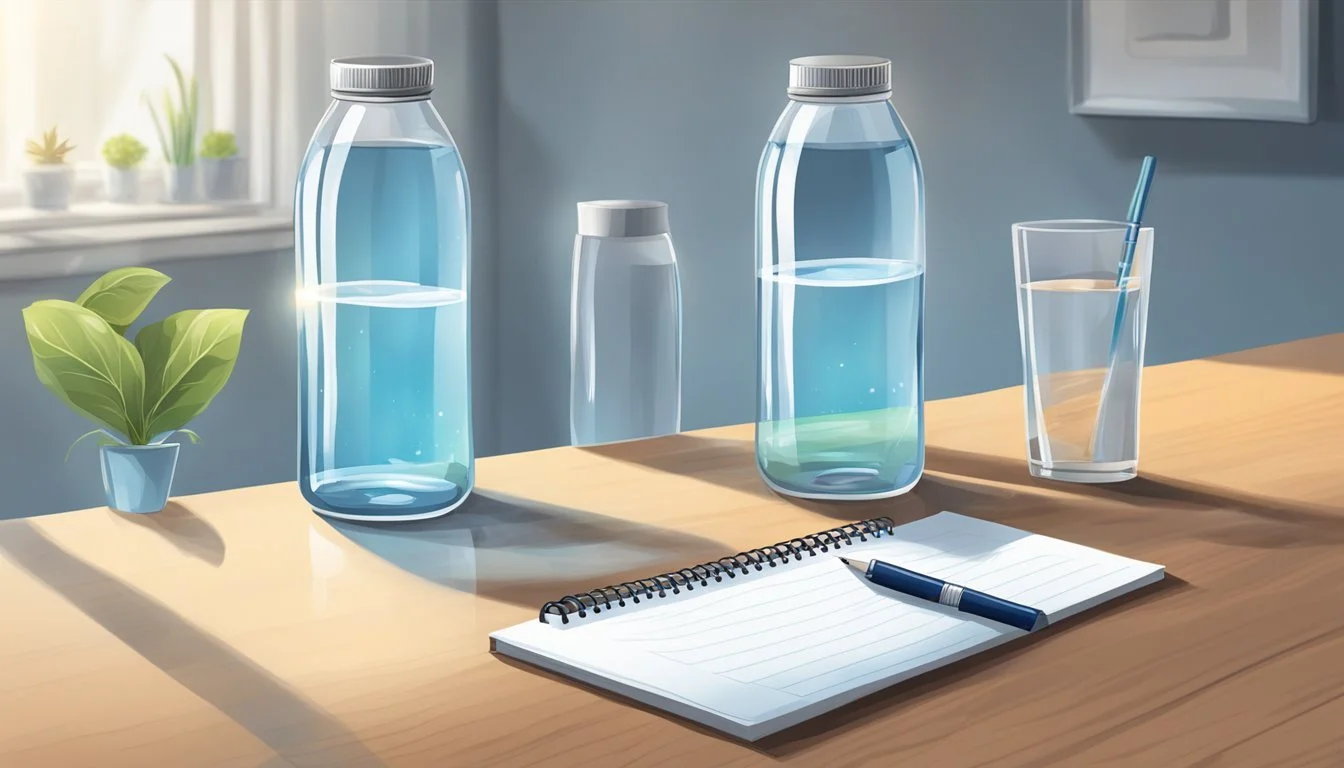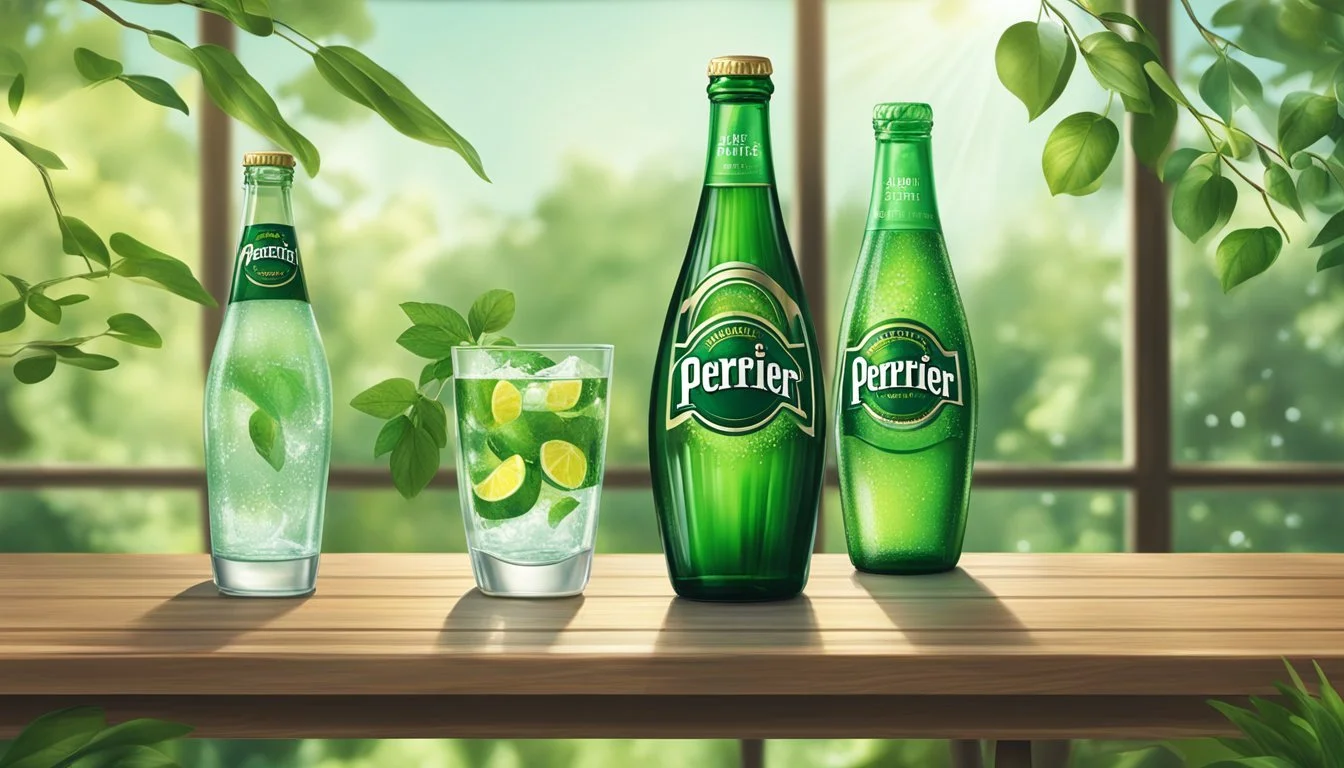Perrier vs. Antipodes
Which Bottled Water is Better? A Comprehensive Analysis
Choosing the right bottled water can be surprisingly complex, especially when faced with premium options like Perrier and Antipodes. Perrier, renowned for its sparkling mineral water originating from France, offers a distinct effervescence that has made it a global favorite for decades. Conversely, Antipodes, sourced from a deep New Zealand aquifer, boasts an ultra-pure still water experience marked by subtle mineral undertones.
Perrier's sparkling profile brings a refreshing and fizzy twist, often enjoyed as a stand-alone drink or as a mixer in various beverages. Its natural carbonation, derived from the spring in Vergèze, France, sets it apart from many other bottled waters and gives it a unique zest. On the other hand, Antipodes promises a velvety mouthfeel and is often praised for its exceptionally clean taste, making it an excellent choice for those seeking a premium still water.
While Perrier caters to those who enjoy the invigorating sensation of bubbles, Antipodes stands out for its pure, smooth texture. This makes Antipodes a preferred option for those looking to savor water in its most natural form. Ultimately, the better choice between the two could depend on whether you prioritize the lively fizz of Perrier or the crystal-clear purity of Antipodes.
The Importance of Water Quality
Ensuring high water quality is crucial for both health and regulatory reasons. The following subsections discuss health implications of contaminants and the regulatory standards set by the EPA and FDA.
Health Implications of Contaminants
Contaminants in drinking water can pose significant health risks. Heavy metals such as lead and mercury can cause neurological and developmental issues. Microbial pathogens like E. coli and Giardia can lead to gastrointestinal illnesses. Chemical pollutants like pesticides and industrial chemicals can disrupt endocrine systems and potentially cause cancer.
Maintaining safe drinking water requires regular testing and monitoring. Consumers should be aware of potential contaminant sources, including agricultural runoff and industrial discharges. Bottled water, like Antipodes and Perrier, is often subject to stringent quality checks, providing an extra layer of safety for those concerned about tap water quality. Ensuring that water contains essential minerals, without harmful additives, is key to maintaining health.
Water Quality Standards: EPA and FDA Regulations
The Environmental Protection Agency (EPA) and the Food and Drug Administration (FDA) set regulations to ensure water safety. The EPA oversees tap water quality through the Safe Drinking Water Act, imposing limits on contaminants and requiring water treatment facilities to adhere to strict standards.
The FDA regulates bottled water under the Federal Food, Drug, and Cosmetic Act. This includes testing for contaminants, ensuring proper labeling, and monitoring the quality of the source water. Bottled water companies must comply with these regulations to ensure their products are safe for consumption.
Comparing Perrier and Antipodes, it’s essential to consider how each brand complies with these regulations. High compliance indicates a commitment to providing safe, high-quality drinking water. Consumers can check labels and brand certifications to verify compliance with EPA and FDA standards.
Ensuring water quality through compliance with these regulations helps protect public health and assures consumers of the safety of both tap and bottled water.
What Defines Bottled Water
Bottled water comes in various forms, each offering unique properties and benefits. From the source of the water to whether it is sparkling or still, several factors define the quality and type of bottled water available in the market.
Sources: Spring Water vs. Mineral Water
Spring water originates from natural springs and is usually collected at the source. It retains minerals naturally present in the water, making it a preferable choice for those seeking a more natural hydration option.
Mineral water contains specific amounts of minerals like calcium, magnesium, and potassium, which are beneficial for health. This type of water is bottled at the source and must contain at least 250 parts per million (ppm) total dissolved solids. Mineral water offers a more consistent mineral composition than spring water, which can be variable.
Bottled water can also be sourced from tap water, which is treated and filtered to meet safety standards. While tap water does not have the natural mineral content of spring or mineral water, it is a convenient and safe option for many consumers.
Types of Bottled Water: Sparkling and Still
Sparkling water is carbonated either naturally or through the addition of carbon dioxide (CO₂). It provides a fizzy texture that many find refreshing and is often chosen as a healthier alternative to sugary sodas. Sparkling water can come from both spring and mineral sources, adding variety to consumer choices.
Still water lacks carbonation and offers a more straightforward hydration experience. This category includes not only spring and mineral water but also purified water. Purified water undergoes processes such as distillation, deionization, or reverse osmosis to remove impurities and contaminants, providing a clean and clear taste.
Both sparkling and still waters offer unique benefits and experiences, catering to different preferences and dietary needs. Consumers often choose based on taste, health benefits, or culinary uses.
Unveiling Perrier and Antipodes
Perrier and Antipodes represent two distinct approaches to bottled water, each with unique origins and brand identities.
Origin Stories and Brand Identities
Perrier originates from the Vergèze spring in the Gard département of France. This iconic brand, founded in 1863, has built a reputation for its naturally carbonated mineral water. Perrier’s green glass bottles and elegant branding aim to convey sophistication and a luxurious lifestyle.
Antipodes hails from New Zealand and is celebrated for its pure, premium water sourced from deep artesian aquifers. Positioned as an eco-conscious brand, Antipodes uses stylish glass bottles to minimize environmental impact. The branding emphasizes purity, natural origins, and sustainability, aligning with contemporary values.
The distinctiveness of both brands lies not just in their water but also in their packaging and environmental commitments.
Analyzing Water Composition
Perrier and Antipodes differ significantly in their mineral content and unique properties. These differences can influence their taste, health benefits, and overall preference for consumption.
Essential Minerals and Electrolytes
Both Perrier and Antipodes offer a diverse range of minerals essential for the human body. Perrier is particularly rich in calcium and magnesium, which contribute to bone health and muscle function. It also contains a notable amount of sodium, which can aid in maintaining hydration levels.
In contrast, Antipodes is characterized by its balanced levels of calcium, potassium, and bicarbonate. These electrolytes help regulate pH balance and support cardiovascular health. The silica content in Antipodes gives it a smooth mouthfeel.
Perrier’s mineral composition includes:
Calcium: 147 mg/L
Magnesium: 3 mg/L
Sodium: 2 mg/L
Antipodes’s mineral composition includes:
Calcium: 8 mg/L
Potassium: 1 mg/L
Bicarbonate: 69 mg/L
Unique Properties of Perrier and Antipodes
Perrier is known for its carbonation, providing a refreshing, effervescent sensation. The natural carbonation process contributes to its distinctive bubbles and crisp taste. Perrier’s pH level ranges from 5.5 to 6, making it slightly acidic.
Antipodes stands out due to its use of glass bottles, considered more environmentally friendly than plastic. Its high silica content, around 72 mg/L, imparts a velvety texture to the water. The water is sourced from New Zealand and is naturally alkaline, with a pH level of around 7.5 to 8.
The difference in total dissolved solids (TDS) also marks a point of distinction. Perrier has a higher TDS, contributing to a more mineral-rich taste, while Antipodes features lower TDS for a purer, softer flavor profile.
Production and Processing Techniques
The production and processing techniques of Perrier and Antipodes differ significantly in their approach to filtration, purification, bottling, and packaging methods.
Filtration and Purification
Perrier uses natural carbonation, drawn from a spring in Vergèze, France. The water undergoes filtration to remove impurities while retaining its distinctive mineral content. This results in its signature, naturally fizzy character.
Antipodes sources its water from an aquifer in New Zealand. The water is naturally filtered through undeveloped basalt and rock, preserving its balanced pH and pure taste without the need for extensive treatment. This sets it apart from brands that rely on reverse osmosis and re-mineralization.
Bottling Process and Packaging
Perrier employs a state-of-the-art bottling process to maintain the consistency of its sparkling water. The company uses both glass bottles and plastic bottles to cater to different market segments. Each bottle is designed to keep the carbonation intact and the water fresh.
In contrast, Antipodes focuses on using glass bottles exclusively. This choice is driven by a commitment to sustainability and premium positioning. The state-of-the-art facility ensures that the water’s purity is maintained from the aquifer to the consumer, with minimal environmental impact.
Taste Profile Analysis
Examining Perrier and Antipodes, the primary factors affecting taste include carbonation, minerality, and the overall sensory experience during consumption.
The Role of Carbonation and Minerality
Carbonation significantly influences the perception of bottled water. Perrier is a naturally carbonated water, with fine bubbles that create a crisp, refreshing sensation. The presence of carbon dioxide impacts the taste, adding a slight tanginess.
In contrast, Antipodes is a still water renowned for its smooth taste. Its mineral profile includes notable levels of silica, calcium, and potassium, contributing to its clean, pure flavor. The absence of carbonation means the taste is purely influenced by these minerals, offering a distinct, unaltered water taste.
Perrier's carbonation makes it a popular choice for those seeking a sparkling, invigorating drink. Antipodes's balanced mineral content ensures a smooth, rich taste, appealing to those who prefer still water.
Perrier vs. Antipodes: Sensory Experience
Perrier's sensory experience is defined by its effervescence. The bubbles stimulate the palate, making it an enjoyable companion to rich and fatty foods. This sparkling quality can enhance the flavors of accompanying dishes, providing a unique drinking sensation.
Antipodes offers a distinctly different experience. Its smooth, still nature complements delicate flavors without overpowering. This makes it ideal for pairing with refined cuisines, where the subtle water taste can highlight the nuances of the food.
While Perrier delivers a zesty, lively mouthfeel, Antipodes provides a calm, consistent experience. Both have unique flavor profiles that cater to different preferences, from those who enjoy the fizz to those who seek pure hydration.
Comparative Analysis
This analysis compares Perrier and Antipodes on aspects such as price, value for money, labeling information, and transparency, helping consumers make an informed choice.
Price and Value for Money
Perrier and Antipodes fall into the premium spectrum of bottled water brands but differ significantly in pricing. Perrier, typically available in most grocery stores, is priced moderately among premium waters. Its sparkling variety makes it a popular daily choice without being prohibitively expensive.
Antipodes, on the other hand, often comes with a higher price tag. This is due to its premium packaging in stylish glass bottles and its source which contributes to its cost. While more expensive, it offers benefits like a higher mineral content, particularly calcium and magnesium, essential for health.
Labeling Information and Transparency
Perrier provides clear and transparent labeling, listing mineral contents and source information explicitly on their bottles. This allows consumers to easily understand what they are purchasing. Perrier's commitment to transparency builds trust and meets consumer expectations for readily accessible information.
Antipodes similarly ensures detailed labeling. Each bottle highlights its high mineral content, including calcium, magnesium, and silica, promoting its health benefits. The use of eco-friendly glass packaging is also clearly stated, appealing to environmentally conscious buyers. Accessible and precise labeling helps solidify Antipodes's position in the premium segment.
By focusing on these aspects, consumers can evaluate and decide which brand meets their needs in terms of cost, health benefits, and transparency.
Impact on Health and Environment
Perrier and Antipodes are not only popular for their taste but their health benefits and environmental sustainability practices also play a crucial role in their appeal to consumers.
Health Benefits of Adequate Hydration
Staying hydrated is essential for maintaining bone health and overall bodily function. Perrier contains natural minerals such as calcium and magnesium, which are beneficial for bone health and muscle function.
Antipodes, sourced from the pristine New Zealand aquifers, is known for its high purity and essential mineral content. These minerals support various bodily functions and contribute to better hydration. Drinking water rich in natural minerals like those found in Perrier and Antipodes can also help replenish electrolytes lost through sweat.
Sustainable Practices and Environmental Footprint
Both Perrier and Antipodes are committed to reducing their environmental impact through sustainable practices. Perrier, a brand under Nestlé, emphasizes its efforts in managing its water sources responsibly and aims to be carbon neutral by 2022.
Antipodes focuses on eco-friendly bottling practices. Using glass bottles rather than plastic, Antipodes ensures less environmental degradation. Additionally, their bottling facility operates with a low carbon footprint, reinforcing their commitment to sustainability.
Perrier similarly utilizes recycled bottles and energy-efficient production methods to reduce its carbon footprint. Through these measures, both brands demonstrate a commitment to preserving the environment while providing high-quality water.
The Culture of Water Consumption
The landscape of bottled water has evolved with the emergence of water sommeliers and innovative branding strategies. Understanding these trends provides insight into the refined tastes and marketing approaches shaping the industry.
The Rise of Water Sommeliers
The concept of a water sommelier has gained prominence, with experts like Martin Riese leading the charge. Riese, a certified water sommelier, curates water menus at upscale restaurants, emphasizing the nuanced flavors and mineral compositions of different waters.
Restaurants now offer water pairings similar to wine, enhancing the dining experience. Sommeliers educate consumers about sourcing, taste profiles, and health benefits. This professionalization elevates water from a mere necessity to a luxury item, fostering a deeper appreciation among connoisseurs.
Innovations in Water Branding
Branding in the bottled water industry has seen significant innovation. Companies now emphasize sustainability, luxury, and purity in their branding strategies. Antipodes from New Zealand markets its artesian water with a focus on premium positioning, competing with established brands like Evian and FIJI.
Innovative packaging and storytelling play crucial roles. Perrier leverages its historical roots and upscale image, while others use eco-friendly messaging to attract environmentally conscious consumers. These strategies enhance brand differentiation and consumer loyalty in a competitive market.
More About Perrier
Icelandic Glacial vs Perrier: Which Bottled Water is Better?
Mountain Valley Spring Water vs Perrier: Which Bottled Water is Better?
Perrier vs Kirkland Signature: Which Bottled Water is Better?
Perrier vs Richard's Rainwater: Which Bottled Water is Better?
Perrier vs Whole Foods Italian Still Mineral water: Which Bottled Water is Better?
More About Antipodes
Antipodes vs Cascade Mountain: Which Bottled Water is Better?
Antipodes vs Hawaii Volcanic: Which Bottled Water is Better?
Antipodes vs Kirkland Signature: Which Bottled Water is Better?
Antipodes vs Richard's Rainwater: Which Bottled Water is Better?
Antipodes vs Solan de Cabras: Which Bottled Water is Better?
Antipodes vs Talking Rain AQA: Which Bottled Water is Better?
Antipodes vs Whole Foods 365: Which Bottled Water is Better?
Antipodes vs Whole Foods Italian Still Mineral water: Which Bottled Water is Better?
Hawaiian Springs vs Antipodes: Which Bottled Water is Better?
Icelandic Glacial vs Antipodes: Which Bottled Water is Better?
Mountain Valley Spring Water vs Antipodes: Which Bottled Water is Better?
Nestle Pure Life vs Antipodes: Which Bottled Water is Better?



